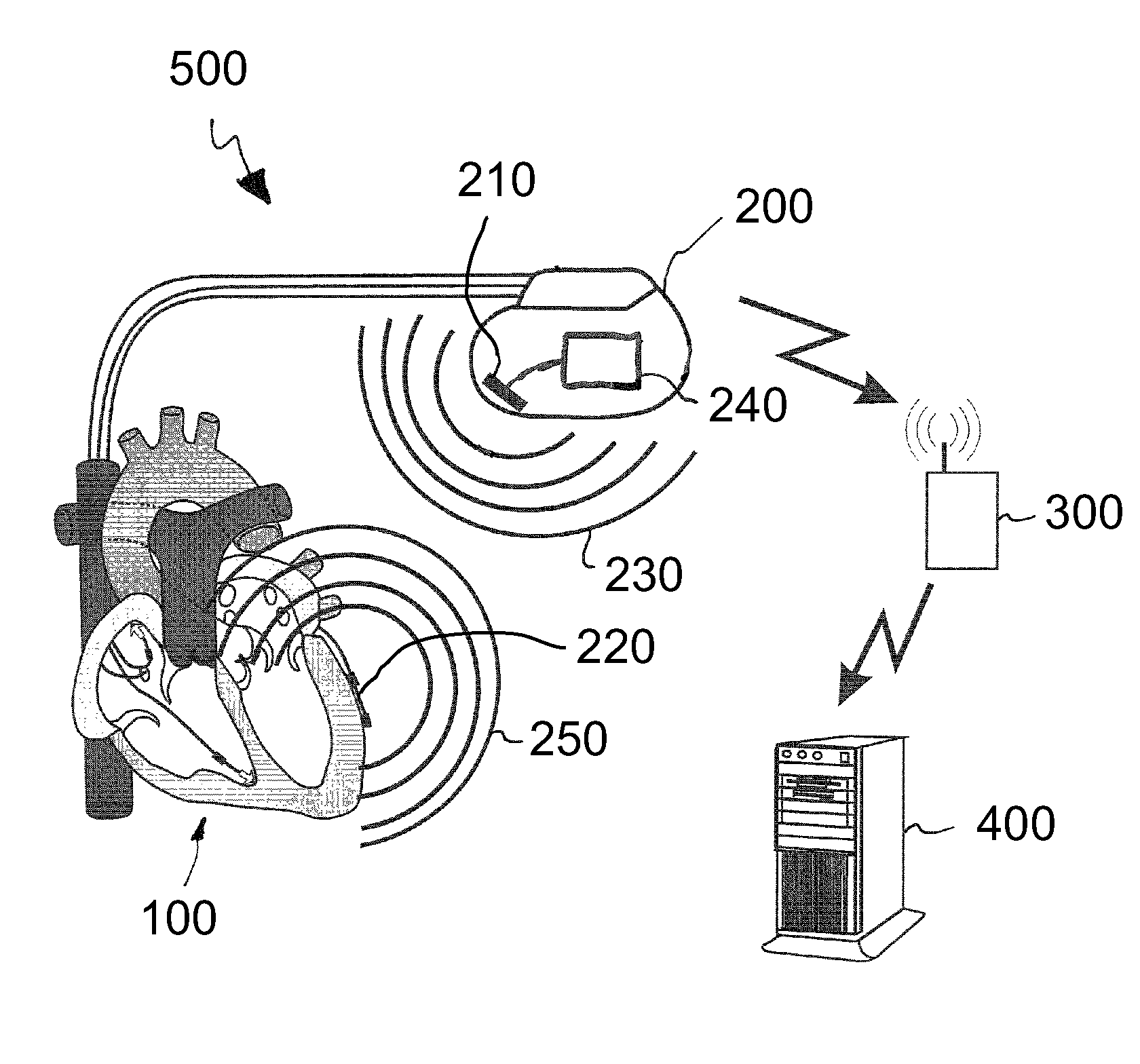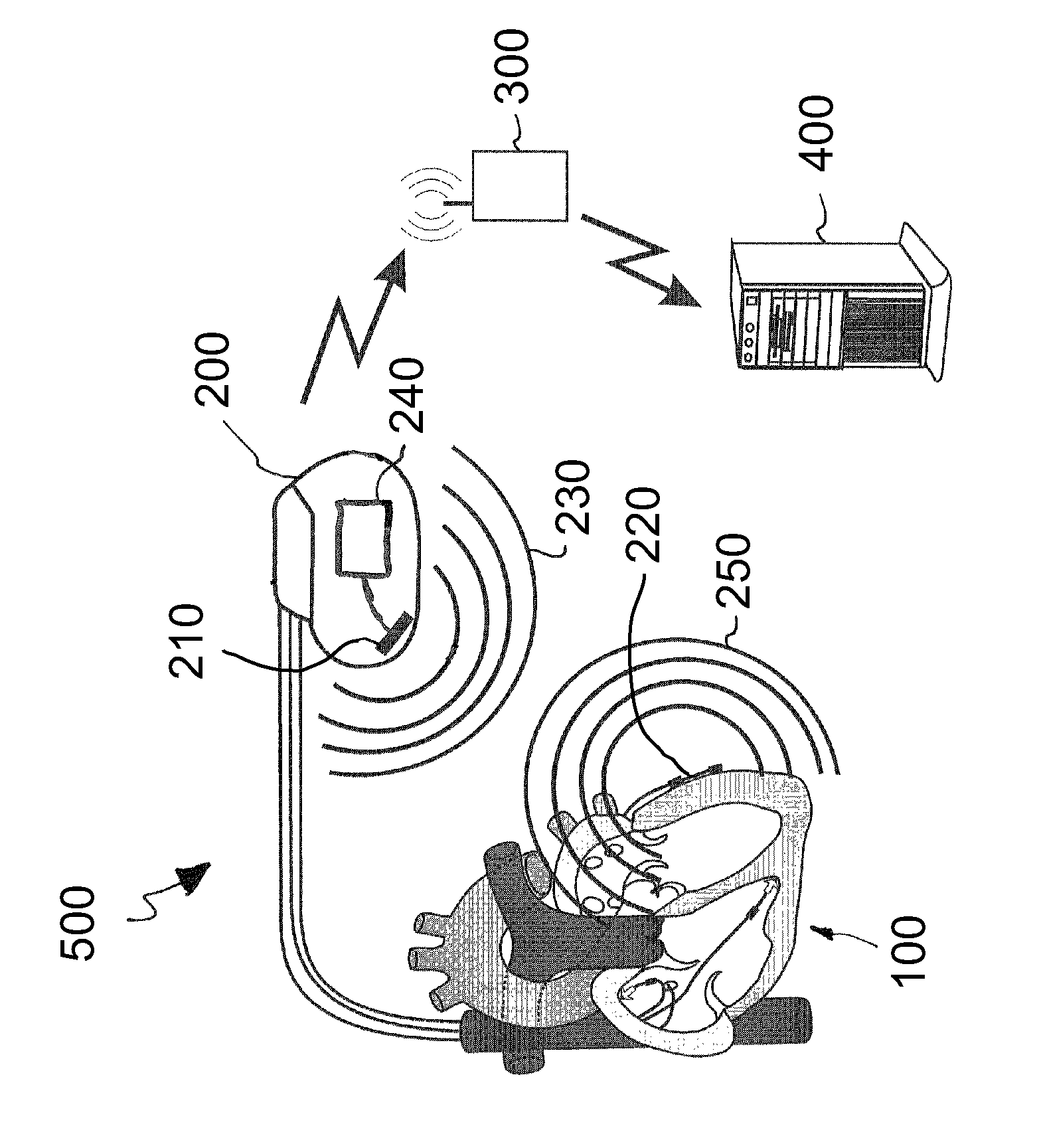Implant and system for predicting decompensation
a technology implants, applied in the field of compensating medical devices with implants, can solve the problems of high dependence, and low specificity of prediction devices based on this approach
- Summary
- Abstract
- Description
- Claims
- Application Information
AI Technical Summary
Benefits of technology
Problems solved by technology
Method used
Image
Examples
Embodiment Construction
[0068]Referring to FIG. 1, the system 500 comprises a version 200 of the implant, a patient device 300, and a processor station 400. The implant 200 is used to predict decompensation of the heart 100 and is disposed in the thorax of the patient. The implant 200 comprises a first acoustic transducer 210 and a second acoustic transducer 220, which are matched to each other. The first acoustic transducer 210 is disposed in the housing of the implant. The second acoustic transducer 220 is disposed outside of the housing of the implant 200.
[0069]In the version illustrated in FIG. 1, the first acoustic transducer 210 is designed as a transmitting and receiving transducer and the second acoustic transducer 220 is designed as a reflector. The second acoustic transducer 220 is disposed in the vicinity of the heart 100, for example on an ICD electrode located there. In order to determine an attenuation value that is dependent on the acoustic attenuation coefficient present between the two aco...
PUM
 Login to View More
Login to View More Abstract
Description
Claims
Application Information
 Login to View More
Login to View More - R&D
- Intellectual Property
- Life Sciences
- Materials
- Tech Scout
- Unparalleled Data Quality
- Higher Quality Content
- 60% Fewer Hallucinations
Browse by: Latest US Patents, China's latest patents, Technical Efficacy Thesaurus, Application Domain, Technology Topic, Popular Technical Reports.
© 2025 PatSnap. All rights reserved.Legal|Privacy policy|Modern Slavery Act Transparency Statement|Sitemap|About US| Contact US: help@patsnap.com



